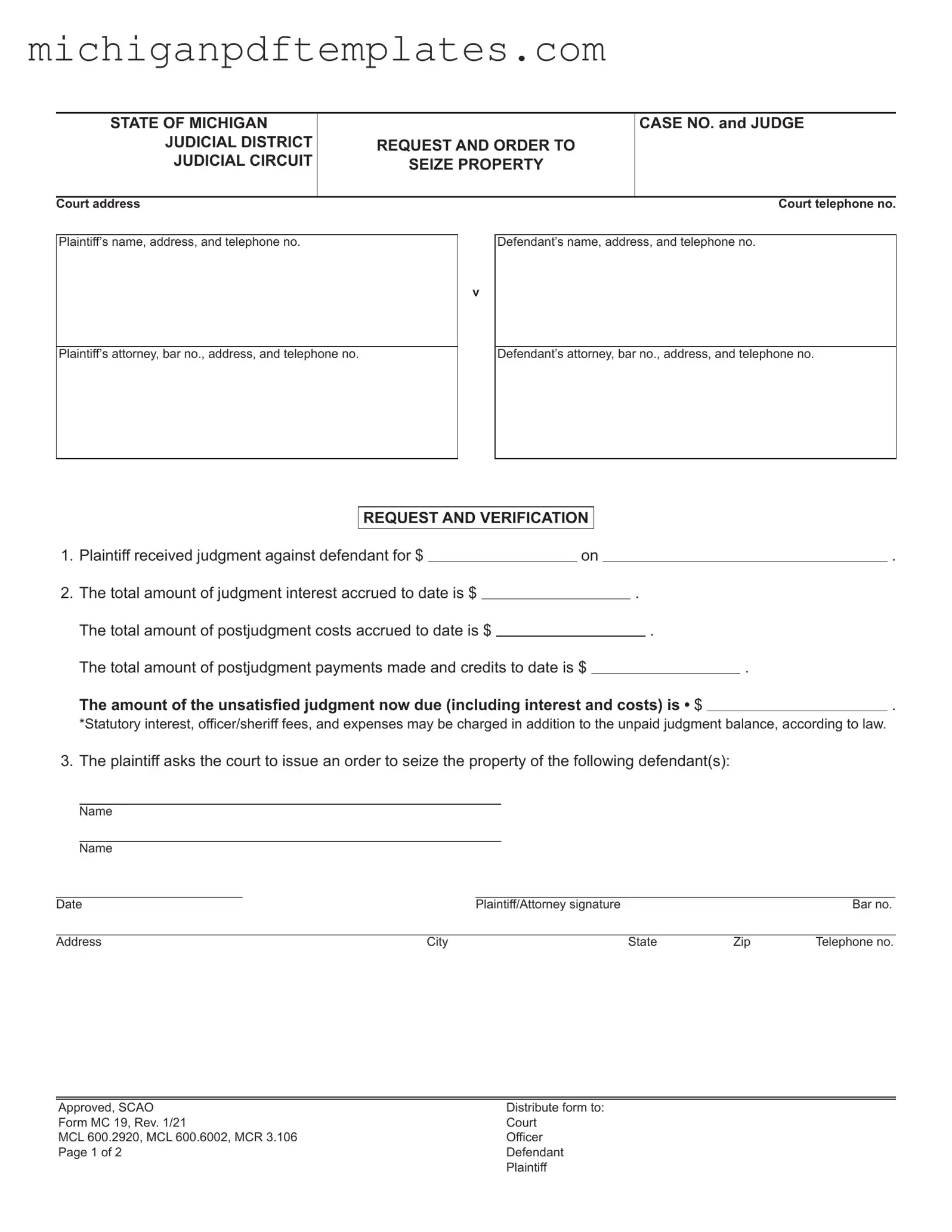The Michigan MC 19 form plays a crucial role in the legal process concerning the seizure of property to satisfy a judgment. This form is utilized when a plaintiff seeks to enforce a court-ordered judgment against a defendant who has failed to comply with the terms of that judgment. It consists of several key components, including a request for the court to authorize the seizure of the defendant's personal or real property, depending on what is available and not exempt from seizure. The plaintiff must provide detailed information, such as the amount of the original judgment, accrued interest, post-judgment costs, and any payments made by the defendant. The form also requires the identification of the defendant(s) involved, including names and, if available, dates of birth. Once completed, the form is submitted to the court, which then issues an order directing a sheriff or authorized officer to execute the seizure. The officer is tasked with collecting sufficient funds from the sale of the seized property to cover the plaintiff's demand, statutory fees, and expenses. Additionally, the form outlines the timeline for the execution of the order, including specific instructions on how and when the order should be served. Understanding the Michigan MC 19 form is essential for both plaintiffs seeking to enforce their rights and defendants facing property seizure, as it encapsulates the legal procedures involved in enforcing monetary judgments.
